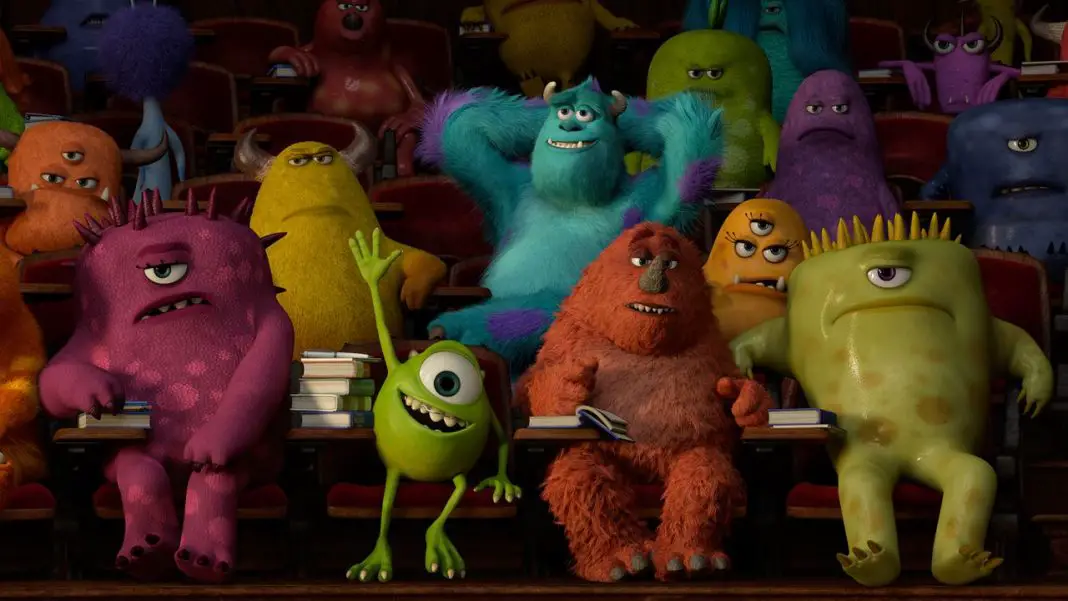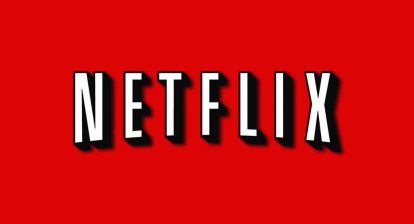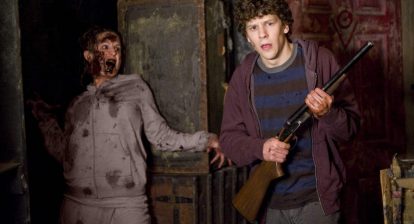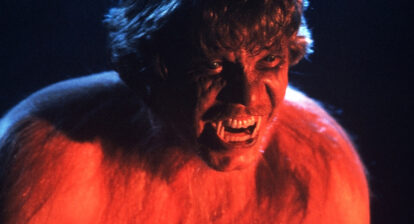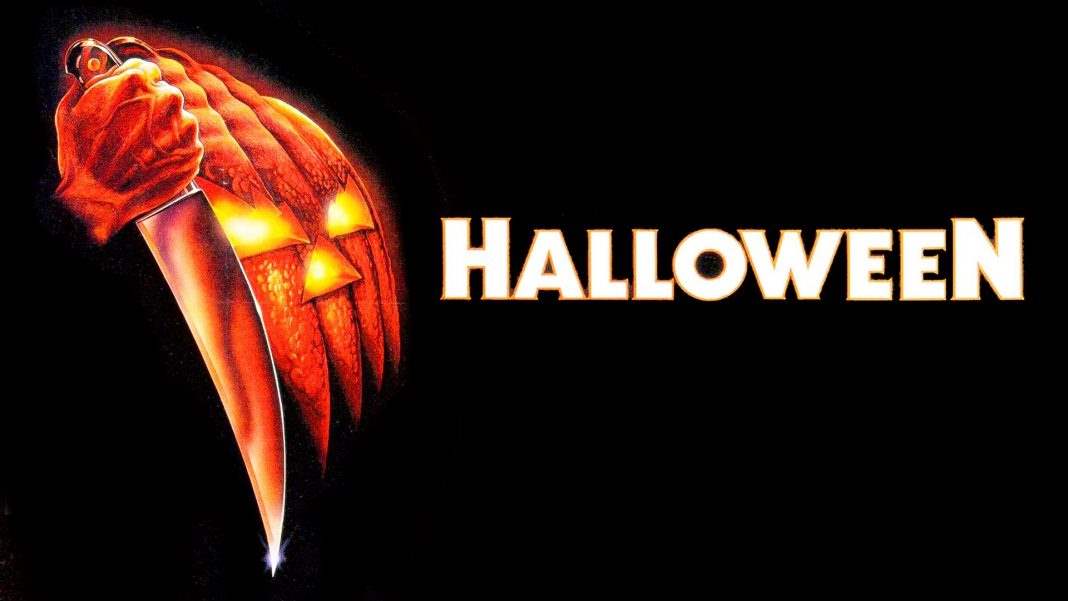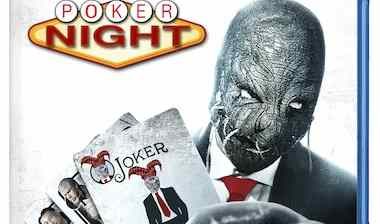What’s the connection between Dracula and donuts? You’ll find out I Dracula’s Brunch Club, a graphic novel devised by Brian Gonsar (Twisted Tales) and Keenan Gaybba.
It’s aimed at younger readers but is right for those of all ages with an appreciation of Bram Stoker’s immortal Drac.
According to the official synopsis from publisher Oni Press, in Dracula’s Brunch Club, readers learn the obsession with blood “all started with a crimson-red donut, dripping and oozing with … jelly. Dripping and oozing with non-spooky-tasting JELLY.” It’s bright red jelly!
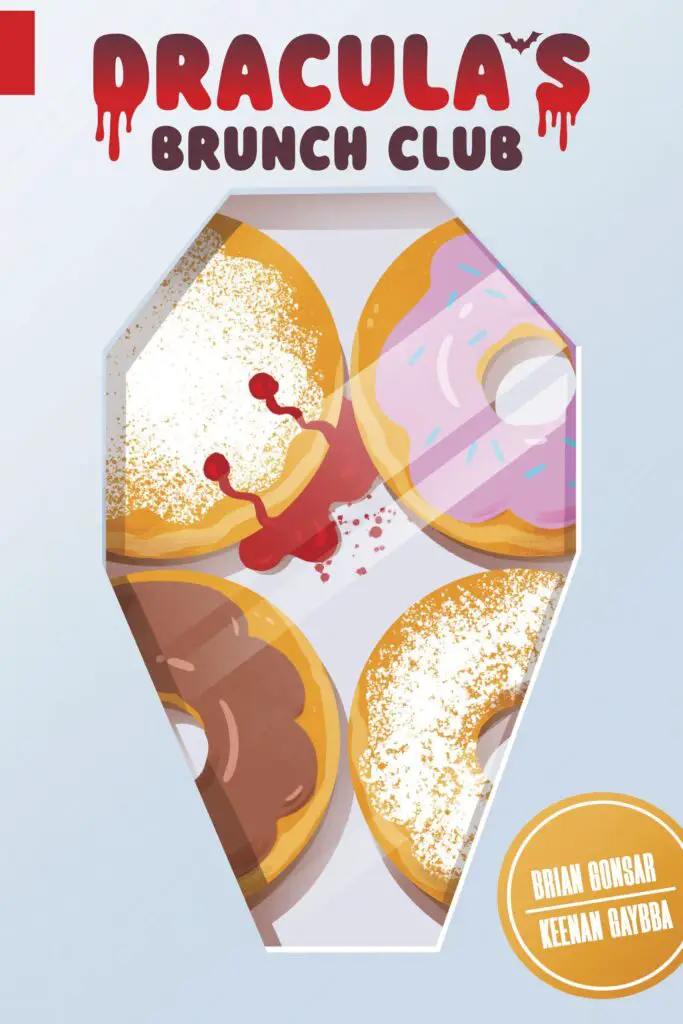
Brian is an award-winning producer with a host of feature films, music videos, art installations, and even a Super Bowl commercial to his credit. He is also a self-proclaimed donut aficionado who has traveled the world to find the best donut.
He recently fielded questions on how Dracula’s Brunch Club came about.
WH: It’s often said humor develops when disparate elements are forced together, but even with that in mind, Dracula and donuts is quite a pairing. What sparked that notion?
Brian Gonsar: I’ve always been a fan of parody, ever since I saw Mel Brooks’ Robin Hood: Men in Tights decades ago. So that kind of thinking is always floating around my brain. A few years ago, my wife was watching a vampire show and I thought, “I wonder why they like blood.” So I took that idea and combined it with the other thing that constantly floats around in my brain: donuts. It only seemed natural that before vampires discovered blood, that it was blood orange jelly that gave them everlasting energy.
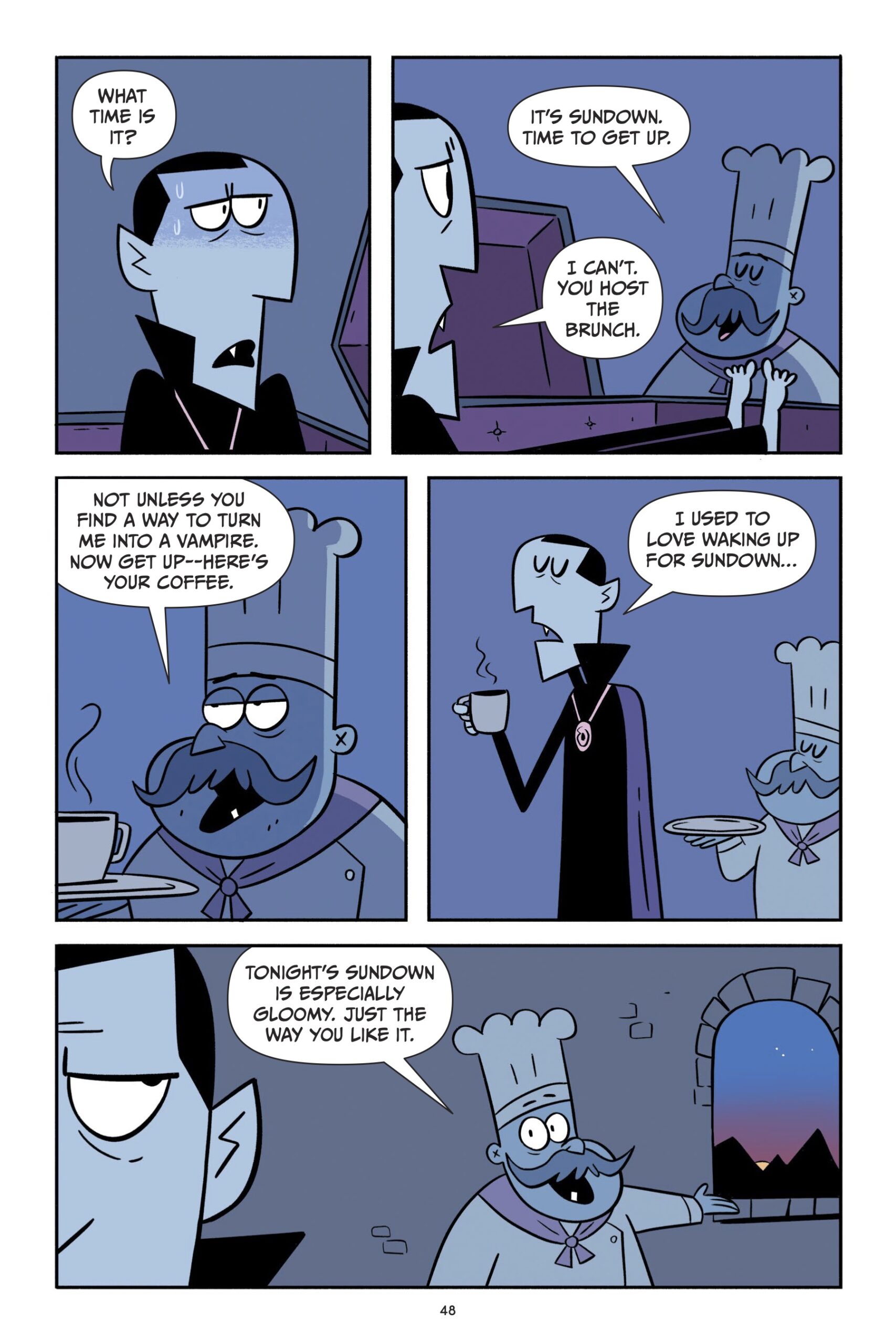
WH: We know Dracula as the Prince of Darkness. Once the wild idea took shape, how did it turn into something for middle-grade readers? How did you go about keeping elements with which we’re familiar about Dracula while making the tale into something for readers not quite ready for the full Count, if you will?
Brian Gonsar: There are some middle-grade readers out there who want to be scared. They devour the Goosebumps and Scary Stories to Tell in the Dark books. And then there are others, like me as a kid, who want to read those books, but don’t want to be up all night, wondering what that creak down the hall was.
For Dracula’s Brunch Club, I toned down those scarier, tenser moments by the comedy and the illustrations. The comedy comes from the quirks from all the characters as well as the twisting of the typical lore and tropes that we normally associate with vampires. The illustrations remain in that cold, blue-and-purple word, but Keenan’s style has a 90s-Cartoon-Network vibe, which helps to make it more approachable for kids.
WH: Once you had the idea in mind, how did you go about finding a home for this project with Oni Press?
Brian Gonsar: My agent thought to reach out to Grace, my editor, based on projects she had edited before. Keenan and I put together a fairly robust pitch packet, complete with synopsis, character breakdowns, marketing plan, comp titles, and 10 fully colored pages. Oni Press really ‘got’ the story, the comedy, and the style. That set us up to be on the same page the entire process.
WH: How much were you involved with shaping the visuals? Was it a matter of trusting the artist, Keenan Gaybba or did it become collaborative.
Brian Gonsar: It was a very collaborative process with Keenan. We had met online after I saw a music video he did for All Time Low called “Monster.” Being this was both our debuts, we did a lot of learning and experimenting together. He didn’t shy away from making some plot suggestions and I contributed a lot to the characters, cover, and illustrations. Luckily, I didn’t have to do much, since his color palette, design sense, and ability to draw expressions added so much to the project, so I trusted him immensely. I do feel it’s important, in any creative field, to have a creative partner. Another person to bounce ideas off of, pick you up when you’re feeling unmotivated, and help elevate one another’s abilities.
WH: Besides the famous vampire, what other characters will readers meet in the graphic novel?
Brian Gonsar: There are a few other vampires, like his best friend Vlad who is a little eccentric when it comes to his appearance. There’s also Constantine, the evil vampire who wants to take over Dracula’s brunch club so he can be in charge.
And then there’s Dracula’s human friends. Chef Jeleu is his right-hand man as well as being the head castle chef and chief sarcasm officer. And then Elena is Dracula’s best, human friend. She’s very charitable and not-so-secretly wishes she could be a vampire as well.

WH: Food is very much a part of culture, and cooking and food shows are ubiquitous. Did you strive for themes exploring the world of food and culture?
Brian Gonsar: Food is a huge part of my world too. My wife released a cookbook (At the Kitchen Sink) earlier this year and I keep a donut blog called The Donut Hunter. We watch food shows, we cook a lot (well, she does), and we plan our vacations around where we are going to eat. I think food is one of those things that can unite people. Food is a great introduction to different cultures and can bring people together. Dracula tries to do that with his brunch club, but it’s Constatine that wants to keep humans and vampires separate. Luckily, Dracula finds a way to make everyone happy at the end.
WH: I know you don’t want to give too much away, but do you have a favorite joke from the graphic novel? Or is there a bit of humor that will, sorry, give Wicked Horror readers a taste of what’s in store?
Brian Gonsar: I love when we play with certain vampire themes. Like when Dracula has a guest over and the guest tells him “I love your living room,” Dracula responds by saying “we prefer to call it the un-living room.” Or when Dracula gets caught using the jelly as a spa treatment, he says “just because I’m dead doesn’t mean my skin needs to be.” We also pick on peas and scones in the book, just to have a little fun with foods that I think are sub-pair to donuts (sorry to anyone in a scone enthusiasts club).


